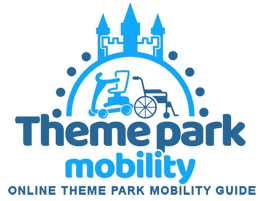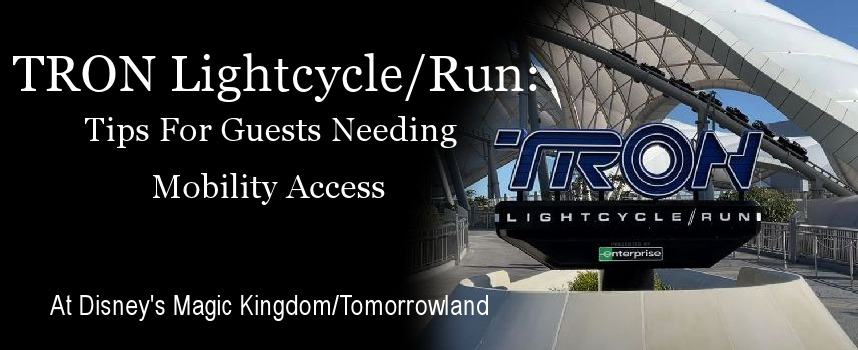Tomorrowland Transit Authority PeopleMover: Tips For Guests With Mobility Disabilities
5 min read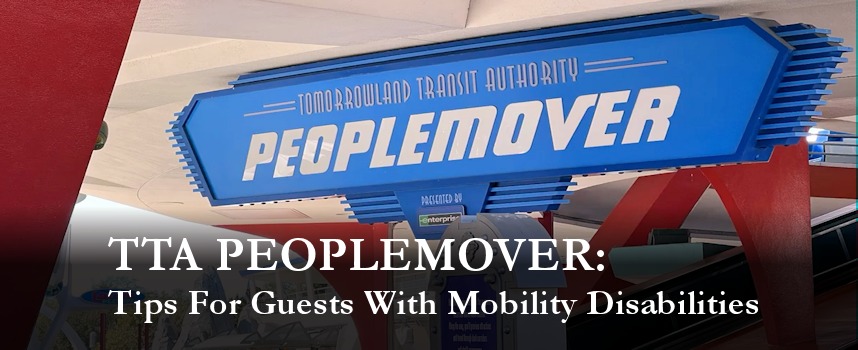
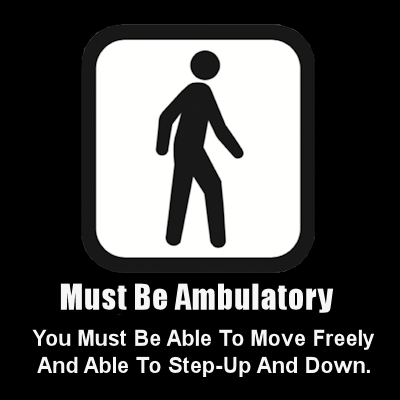
In this post, I will discuss the Tomorrowland Transit Authority PeopleMover at the Magic Kingdom, providing tips for Guests with Mobility Disabilities. For brevity in this post, let’s refer to the ride as the PeopleMover. As noted above, you MUST BE AMBULATORY to access the PeopleMover. In other words, you must be mobile enough to walk to and from the ride vehicle. Refer to my blog post, “Guide For Guests With Disabilities,” for additional information.
Some Segments Of The PeopleMover Are Not Very Accommodating To Those With Mobility Disabilities
Some Disney World PeopleMover attraction segments do not accommodate those with mobility disabilities. As I continue, you’ll understand why this is the case after providing you with all the details. Hence, you’ll have to decide if you have the mobility required to ride this attraction.
The queue for the PeopleMover is your typical switchback waiting line. The line is outside, with some of the area covered and some exposed to the elements. You can wait in line with your mobility aid.
However, once you get to the ride entrance, you must leave the scooter, wheelchair, or rollator in an area designated by a Cast Member. Then you’ll need to walk back to the ride entrance to pass through a turnstile. The only mobility aids that will fit through the turnstile are canes and crutches.
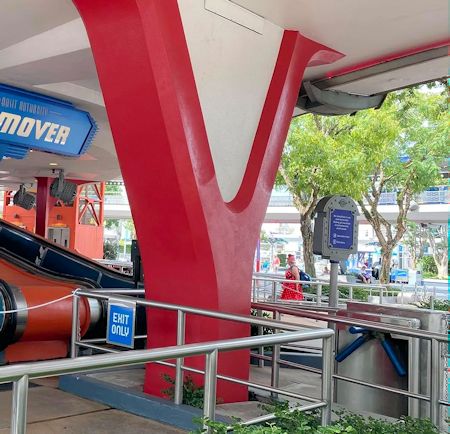
Alternatively, you could wait just outside the ride entrance while someone in your party goes through the queue. Once they get to the front entry position, the Cast Member will allow you to join your party. When I went to Disney World last year, that’s what I did.
My son got into the line, and once he got to the front, I joined him. I had already parked my ECV, sat down on a nearby bench, and waited for him near the entrance. A Cast Member suggested this to us, which made it much less of a hassle.
Riding Up A Long, Steep, Moving Walkway Called A Speed Ramp
I used my cane for stability and walking assistance when I approached the turnstile at the attraction entrance. However, the most challenging part of the ride for me with a mobility disability was what followed next.
To get to a PeopleMover ride vehicle, you must travel up a long, steep, moving walkway called a speed ramp to the ride’s boarding platform. But first, I had to transition onto the moving walkway from the stationary entry point.
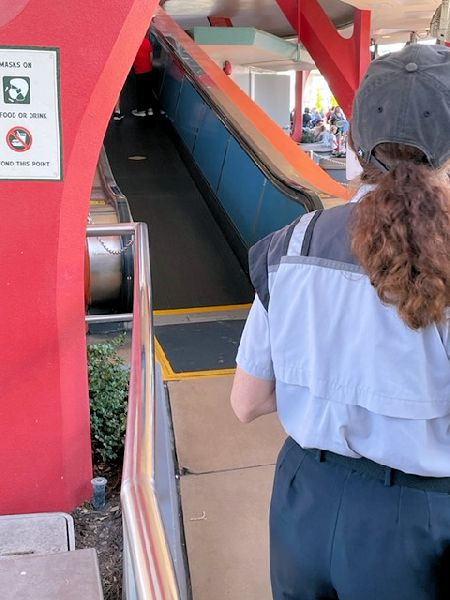
The speed ramp is rubberized without flat, level platforms like those on an escalator. A typical escalator incline is 30°, and I believe the walkway is at or close to that incline. Imagine standing on that moving walkway as you proceed upwards to the ride’s boarding platform on the second level. It wasn’t easy maintaining my balance. The stress on my legs, particularly my calf and thigh muscles, was considerable.
Arriving At The Top Or Second Level And The PeopleMover Boarding Platform
Once arriving at the top or second level, you’ll be at the PeopleMover boarding location. First, however, you’ll need to walk a short distance before stepping onto a moving platform that matches the speed of the PeopleMover vehicles. After that, entrance into the individual PeopleMover vehicle is accessible. It’s one short step up, and you’re into the car and able to sit down.
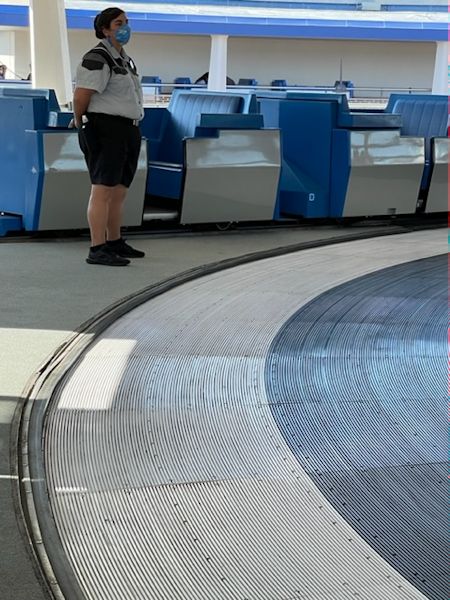
However, I have difficulty transitioning onto any moving walkway or platform from a stationary position. Notice in the image below the existence of a fixed yellow transfer plate. The transfer plate allows for a smooth transition from the stationary entrance surface to the moving walkway.
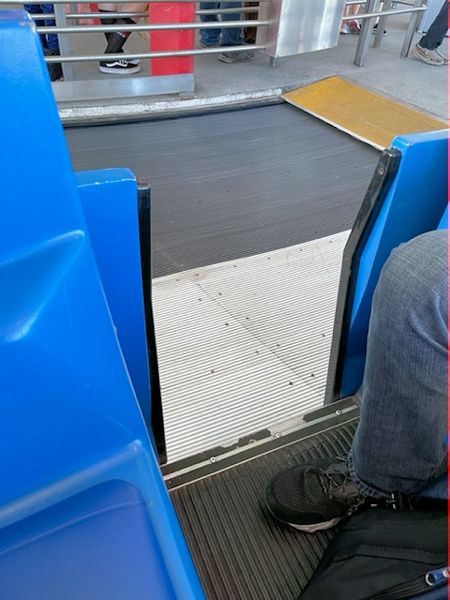
Moving Walkway And The Yellow Transfer Plate
Just prior, I managed to walk onto the speed ramp, but I wasn’t confident doing it here. So I asked the Cast Member at the ride if she could slow it down a bit. She was very accomodating and stopped the platform entirely so I could enter the ride vehicle at my pace.
After a ten-minute elevated tram ride through Tomorrowland, the PeopleMover arrived back at the station where I disembarked. Again, I asked another Cast Member to slow or stop the moving platform so I could exit the PeopleMover car and area. She did so without question, thus ensuring my safety.
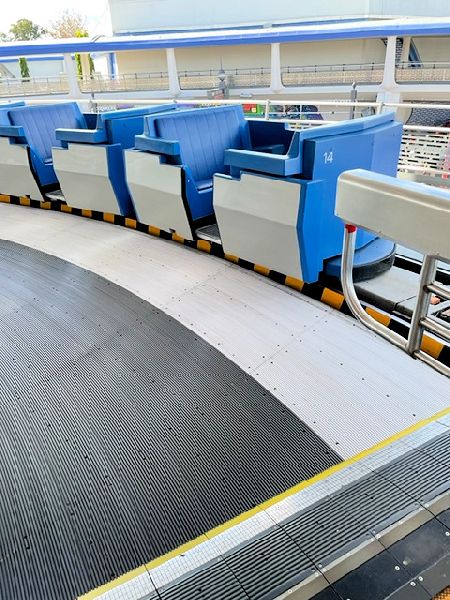
The Transfer Plate Highlighted In Yellow On The Front Lip
Going back down the moving walkway was more strenuous for me than my upward journey. Nevertheless, I managed to get down to the bottom but not before straining my leg muscles again. Accordingly, my calf and thigh muscles were sore the next day.
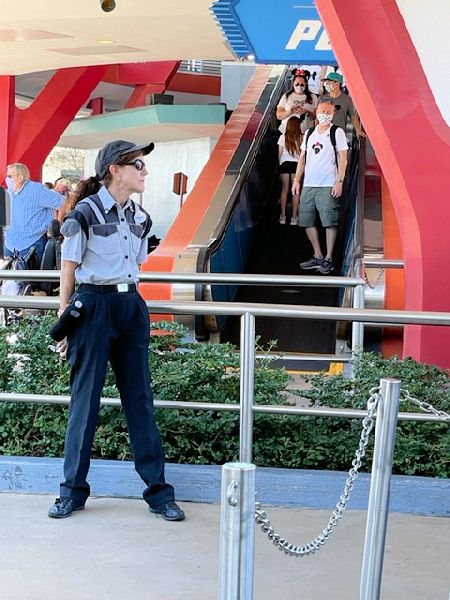
My Thoughts About Riding The PeopleMover Again In The Future
The PeopleMover first opened on July 1, 1975. It’s still a must-ride attraction for many Disney guests, even though it’s been around for almost 47 years. It’s now become more prevalent due to its devotees.
I first rode the PeopleMover a long time ago when my children were young. For nostalgic purposes, it was nice to be able to do so again. Unfortunately, however, reality has set in. Given the difficulty for someone like me with mobility issues managing the PeopleMover, I would hesitate to do so again.
There are too many other options at the Magic Kingdom for those with mobility disabilities to choose from instead. In my opinion, going up and then down the speed ramp was the most challenging part. In conclusion, I’ll let you decide what’s best for you.
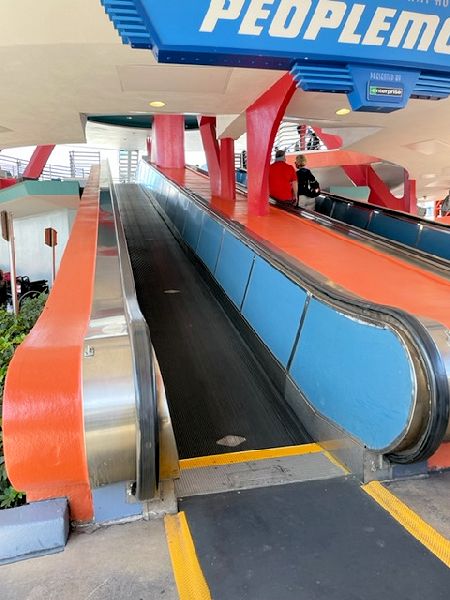
Back Down From The Ride’s Boarding Platform
